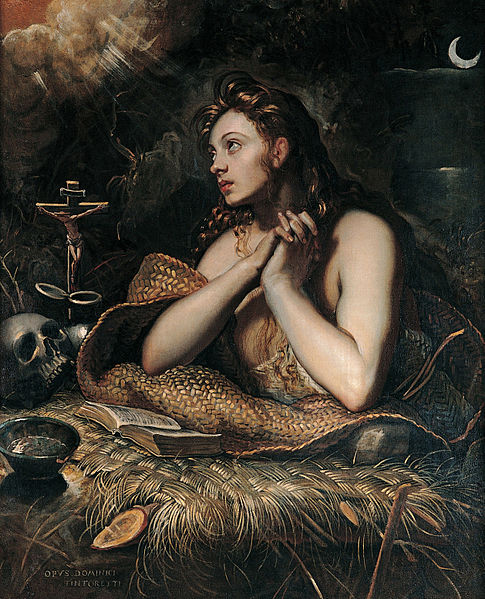Pistis Sophia is a Gnostic text discovered in 1773, possibly written between the 3rd and 4th centuries AD. The existing manuscript, which some scholars place in the late 4th century, relates one Gnostic group's teachings of the transfigured Jesus to the assembled disciples, including his mother Mary, Mary Magdalene, and Martha. In this text, the risen Jesus had spent eleven years speaking with his disciples, teaching them only the lower mysteries. After eleven years, he receives his true garment and is able to reveal the higher mysteries revered by this group. The prized mysteries relate to complex cosmologies and knowledge necessary for the soul to reach the highest divine realms.
The phrase "Jesus, who is called Aberamentho" in the original Coptic
Jesus appears to his disciples after the resurrection
Jesus with Mary Magdalene
Mary Magdalene was a woman who, according to the four canonical gospels, traveled with Jesus as one of his followers and was a witness to his crucifixion and resurrection. She is mentioned by name twelve times in the canonical gospels, more than most of the apostles and more than any other woman in the gospels, other than Jesus's family. Mary's epithet Magdalene may be a toponymic surname, meaning that she came from the town of Magdala, a fishing town on the western shore of the Sea of Galilee in Roman Judea.
Mary Magdalene (c. 1598) by Domenico Tintoretto, depicting her as a penitent
Photograph taken c. 1900 of al-Majdal, a village standing among the ruins of Magdala, Mary Magdalene's hometown
The Conversion of Mary Magdalene (c. 1548) by Paolo Veronese
Detail of Mary Magdalene weeping at the crucifixion of Jesus, as portrayed in The Descent from the Cross (c. 1435) by the Flemish artist Rogier van der Weyden







